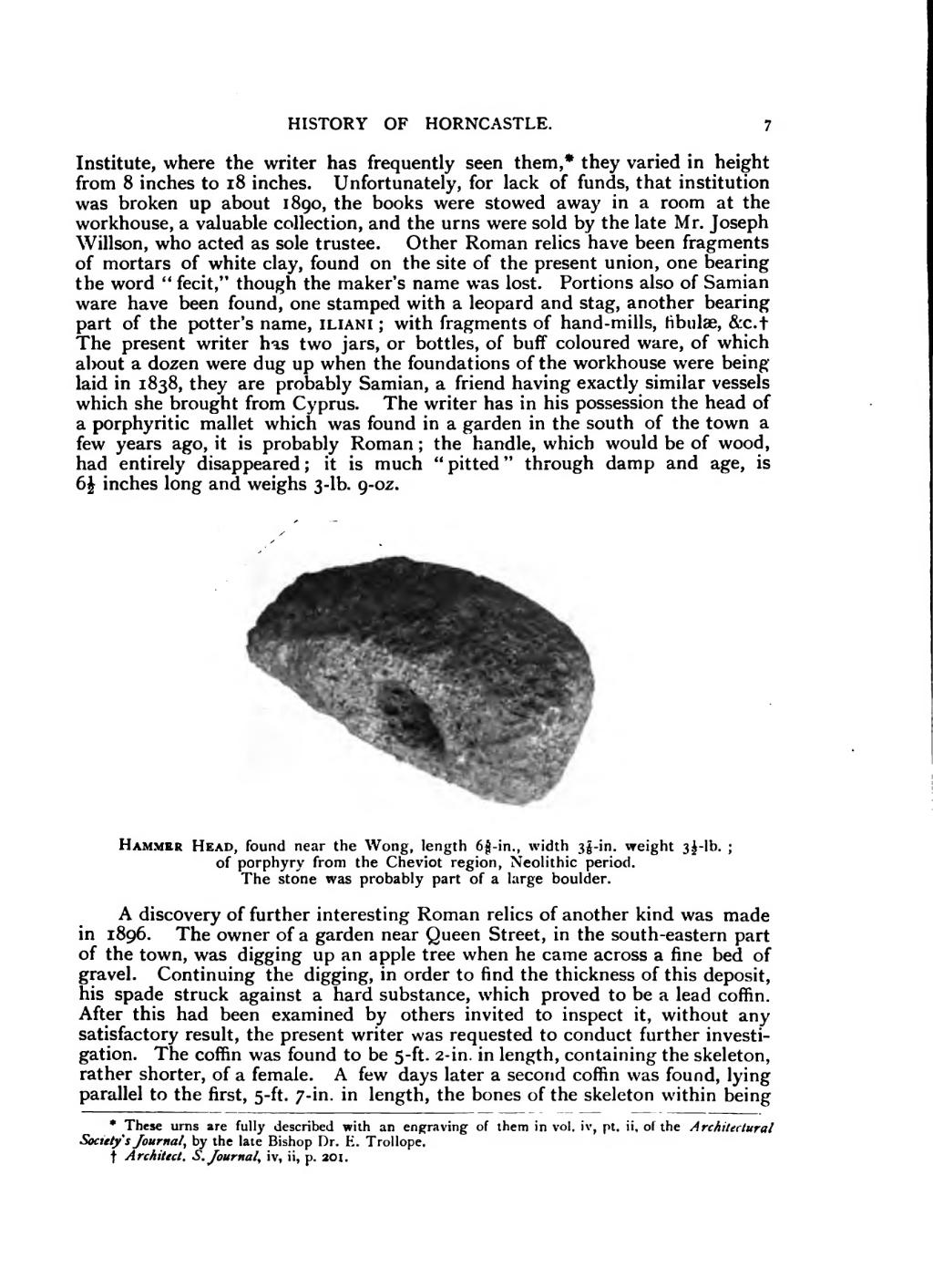Institute, where the writer has frequently seen them,[1] they varied in height from 8 inches to 18 inches. Unfortunately, for lack of funds, that institution was broken up about 1890, the books were stowed away in a room at the workhouse, a valuable collection, and the urns were sold by the late Mr. Joseph Willson, who acted as sole trustee. Other Roman relics have been fragments of mortars of white clay, found on the site of the present union, one bearing the word "fecit," though the maker's name was lost. Portions also of Samian ware have been found, one stamped with a leopard and stag, another bearing part of the potter's name, ILIANI; with fragments of hand-mills, fibulæ, &c.[2] The present writer has two jars, or bottles, of buff coloured ware, of which about a dozen were dug up when the foundations of the workhouse were being laid in 1838, they are probably Samian, a friend having exactly similar vessels which she brought from Cyprus. The writer has in his possession the head of a porphyritic mallet which was found in a garden in the south of the town a few years ago, it is probably Roman; the handle, which would be of wood, had entirely disappeared; it is much "pitted" through damp and age, is 6½ inches long and weighs 3-lb. 9-oz.

Hammer Head, found near the Wong, length 6⅝-in., width 3⅞-in. weight 3½-lb.; of porphyry from the Cheviot region, Neolithic period.
The stone was probably part of a large boulder.
A discovery of further interesting Roman relics of another kind was made in 1896. The owner of a garden near Queen Street, in the south-eastern part of the town, was digging up an apple tree when he came across a fine bed of gravel. Continuing the digging, in order to find the thickness of this deposit, his spade struck against a hard substance, which proved to be a lead coffin. After this had been examined by others invited to inspect it, without any satisfactory result, the present writer was requested to conduct further investigation. The coffin was found to be 5-ft. 2-in. in length, containing the skeleton, rather shorter, of a female. A few days later a second coffin was found, lying parallel to the first, 5-ft. 7-in. in length, the bones of the skeleton within being
